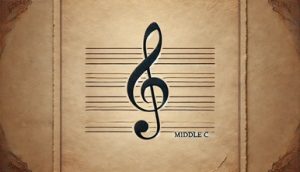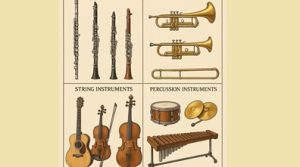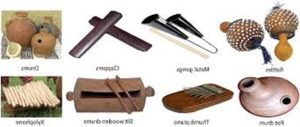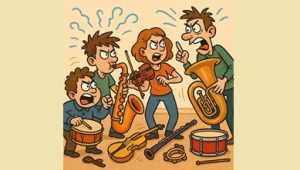Alto Clef: An In-Depth Guide to Music Theory
Alto Clef: An In-Depth Guide to Music Theory
The alto clef truly takes on a unique role in music notation, which rests between the realms of high and low.

This guide covers a collection of topics touching on its definition, its historical role, related instruments, as well as its teaching and performance application.
What is the Alto Clef?
The C clef, or alto clef, signifies to a great degree the pitch of written notes in music.
It is placed on the staff in such a manner that the middlemost point of this clef shows middle C; the C clef has a property whereby it may occupy different lines of the staff in its deployments.
If deployed onto the third line of the staff, then it is termed the alto clef.
Why Does the Alto Clef Exist?
Going by history, the alto clef was initiated to minimize the use of ledger lines in notation for alto singers in choirs.
The alto vocal range comes in between the two common clefs treble and the bass clefs, thus it’s important to have a clef that is more accurately aligned with its pitches.
The Historical Context
Historically, the alto clef descended from the movable C clefs largely in use during the late Renaissance and Baroque times, which were used for various voices.
Alongside the development of music notation, the C clefs became mainly associated with the viola, an instrument whose range matches the alto clef beautifully.
Today, still, it continues to be heavily utilized by violists and certain brass and woodwind instruments for clear and efficient notation of music.
Using the Alto Clef Instruments and the Vocal Ranges
The main instrument utilizing the process of notation called alto clef is the viola, which corresponds to the center voice of the string family.
The clef produces clear and practical numbers about the range of the instrument. Now and again, other woodwind and brass instruments among these include trombones that rely on the alto clef.
In vocal music, countertenors, mezzo-sopranos, and altos find their use very helpful for readability in a large spectrum of compositions.
Reading Music in the Alto Clef
Alto clef reading relies on recognizing its alignment with the staff.
Unlike notes in the treble and bass clefs, which follow fixed reference points, the alto clef centers around middle C on the third line.
Musicians must adjust their note recognition strategies, but consistent practice strengthens fluency over time.
How to Draw an Alto Clef
The following steps will guide you through the making of an accurate alto clef:
- Draw the Staff: Put down five parallel lines that are equidistant from each other.
- Identify the Middle Line: This is where the alto clef sits, marking middle C.
- Draw the Vertical Line: Place a vertical line down through the middle line, projecting just over and under the staff.
- Add the Curves: Draw 2 curves, from the top and the bottom of the vertical line, piercing across it at approximately the midpoint; this curve looks somewhat like a stylized S.
- Mark Middle C: Ensure the curves cross at the middle line, correctly indicating middle C.
- Final Touches: Finalize the clarity of the curves and vertical lines for proper notation.
Drawing it accurately ensures that its proper interpretation of note values is of the essence, especially for the violas that rely heavily on this clef.
Why Is the Alto Clef Important for Music Education and Performing?
Musicians whose instruments employ the alto clef must be able to read it.
Learning the clef will facilitate specialization in musical activities, create credible avenues for music-theoretic thought, and initiate emphasis in all sorts of performing directions.
The history and usefulness of the alto clef make it an intersection where music education must converge.
Practical Applications and Exercises
In mastering the alto clef, musicians can:
- Practicing identifying single notes in the clef.
- Next, gradually make the transition between playing easy tunes to harder pieces.
- Start composing with the viola in mind: composing on the alto clef will give the notation more clarity.
Conclusion
The alto clef remains important for music notation. An important part of music history is its practical adaptation to the needs of contemporary musicians.
Having in-depth knowledge of the reading and understanding of the alto clef gives musicians a greater range and interpretation of written music.
Frequently Questions People Asked
Why associate the alto clef largely with the viola?
The alto clef matches the viola’s range perfectly, putting most notes on the staff itself and thus making reading all that easier, eliminating ledger lines, and accentuating notation clarity for the instrument.
Can I use an alto clef for instruments besides the viola?
Yes. Some woodwind and brass instruments, including trombone, occasionally use the alto clef for notation whenever it best fits their range.
What is different in reading the alto clef as compared to reading the treble or bass clefs?
With the alto situated at middle C on its third line, it requires reference adjustment by its players.
What benefits would musicians accrue by mastering the alto clef?
Mastering the alto clef will append a musician’s repertoire, improve their adjustment skills while performing with different instruments, and improve their understanding of music theory as a whole.





